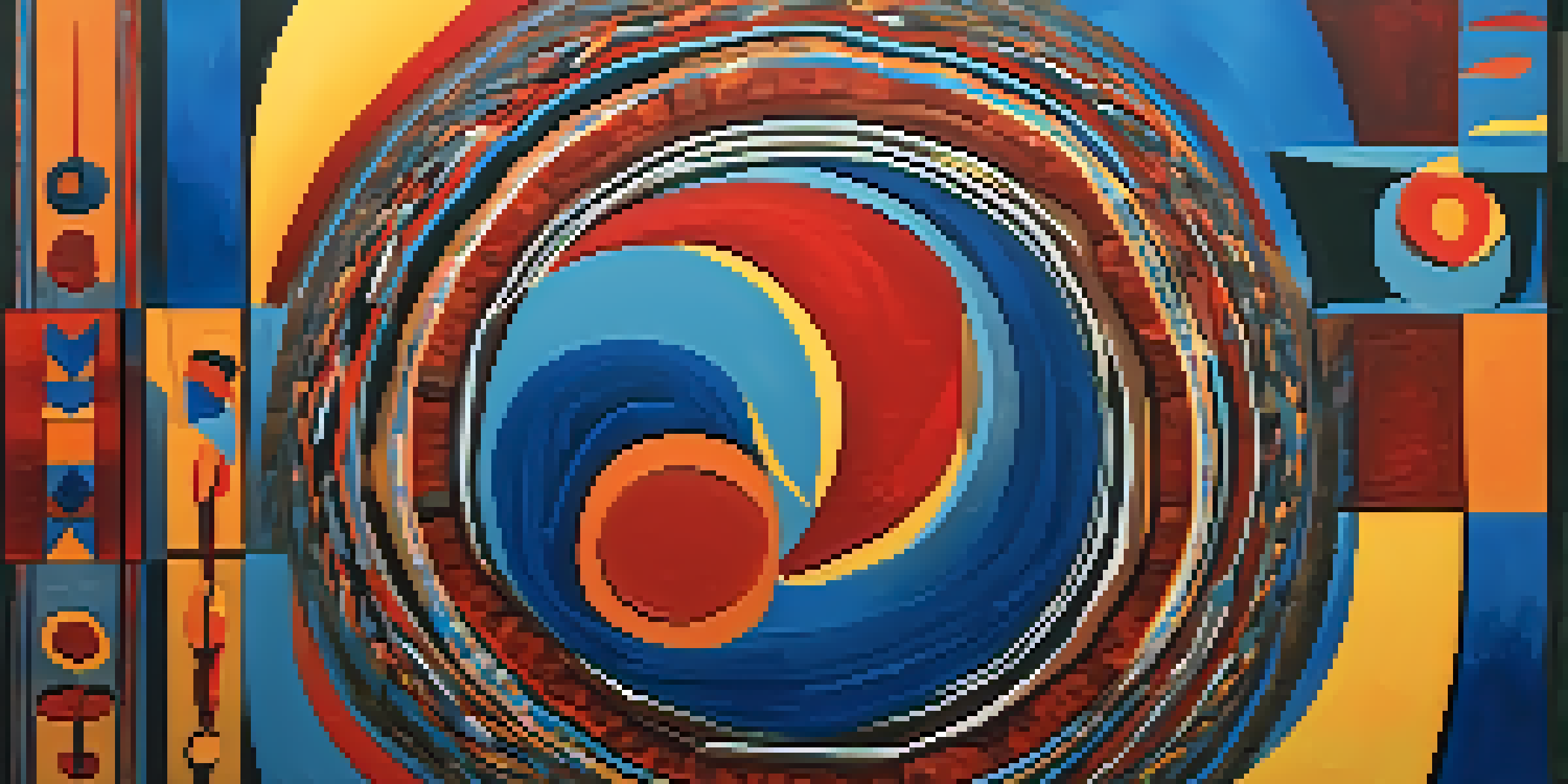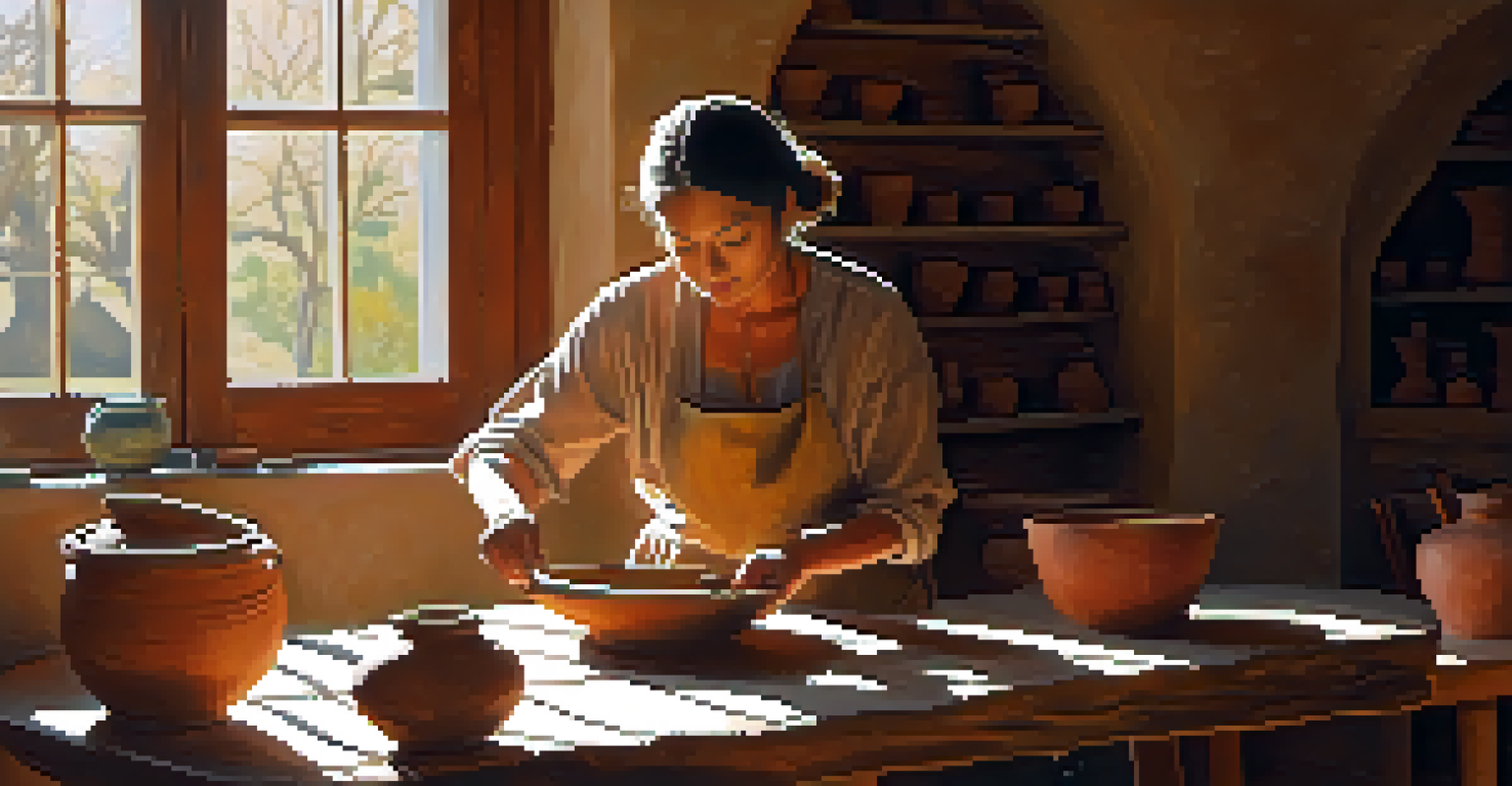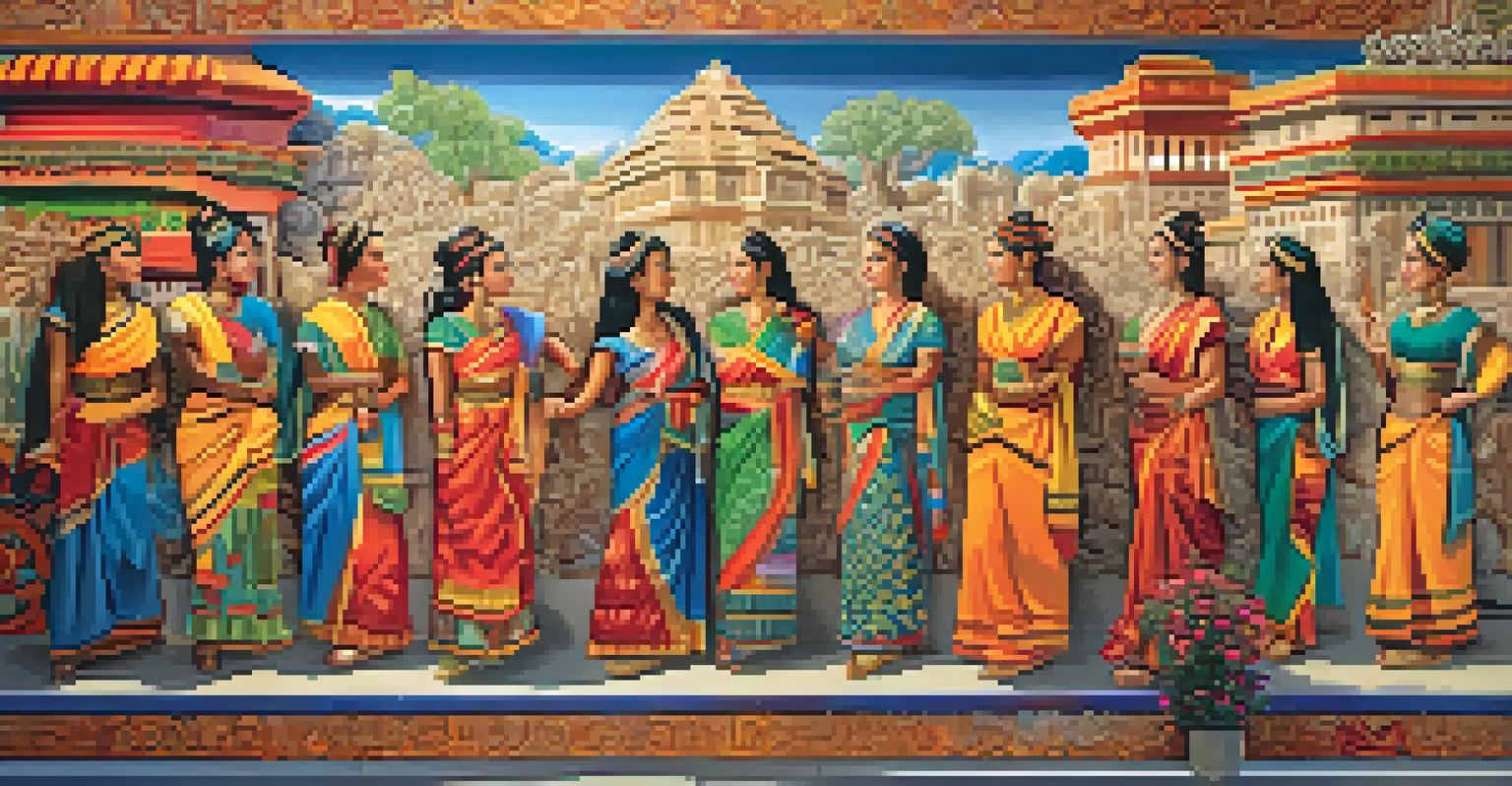Influence of Ancestral Traditions on Modern Painting Styles

Understanding Ancestral Traditions in Art
Ancestral traditions refer to cultural practices and artistic expressions passed down through generations. These traditions often reflect the beliefs, values, and experiences of a community and can be seen in various art forms. In painting, these influences manifest in color choices, themes, and techniques that artists adopt, whether consciously or subconsciously.
Art is the most beautiful of all lies; it is the most direct and sincere form of communication we can have with each other.
For example, Indigenous artists often incorporate symbols and storytelling elements from their heritage, leading to a unique visual language that resonates deeply with their cultural identity. This connection to ancestry not only enriches their work but also educates viewers about their history and values. As such, understanding these traditions is crucial for appreciating the depth of modern paintings.
By recognizing the importance of these ancestral influences, we can better understand the evolution of artistic styles. The interplay between tradition and modernity creates a dynamic landscape in contemporary art, where old meets new in exciting ways.
Influence of Cultural Heritage on Techniques
Cultural heritage plays a vital role in shaping an artist's techniques and methods. For instance, traditional methods like fresco painting or batik can inspire modern artists to experiment with similar processes while adding their flair. This blending of techniques helps bridge the gap between historical practices and contemporary art forms, creating a fusion that is both innovative and respectful.

Moreover, many modern artists actively seek to revive and incorporate ancestral techniques into their work. This practice not only pays homage to their roots but also invites audiences to connect with the past through a modern lens. For example, artists might utilize natural pigments derived from plants, reminiscent of ancient practices, to create stunning, eco-friendly artworks.
Ancestral Traditions Shape Art
Cultural practices and artistic expressions passed down through generations enrich modern art by reflecting community beliefs and values.
Ultimately, the influence of cultural heritage on techniques showcases the ongoing dialogue between tradition and innovation. As artists explore and reinterpret these methods, they create a rich tapestry of artistic expression that reflects both their personal journey and their cultural lineage.
Symbolism in Modern Painting: Ancestral Echoes
Symbolism is a powerful tool in painting, often carrying deep meanings rooted in ancestral traditions. Many modern artists draw inspiration from symbols that represent their heritage, using them to convey complex narratives. This approach not only enriches the artwork but also invites viewers to engage with the cultural significance behind each symbol.
The essence of all art is to have pleasure in giving pleasure.
For instance, the use of animal motifs in Native American art often symbolizes various aspects of life and spirituality. Modern artists might incorporate these motifs into their work, blending them with contemporary themes to create a dialogue between past and present. This layering of meaning encourages audiences to explore the stories behind the symbols, fostering a deeper appreciation of the art.
By embracing symbolism from ancestral traditions, artists can create visually captivating pieces that resonate on multiple levels. These artworks serve as a bridge, connecting viewers to the rich tapestry of cultural history while addressing contemporary issues.
The Role of Storytelling in Contemporary Art
Storytelling has always been a cornerstone of artistic expression, and many modern painters draw from ancestral narratives to inform their work. These stories often reflect the struggles, triumphs, and everyday lives of their communities, providing a rich context for the viewer. By weaving these narratives into their paintings, artists can create a compelling connection to their heritage.
For example, an artist might depict scenes from their family's history, showcasing both personal and collective experiences. This storytelling approach not only honors their ancestry but also invites viewers to reflect on their own stories and connections. As a result, these paintings become a shared experience, transcending cultural boundaries.
Symbolism Connects Past and Present
Modern artists use ancestral symbols to create deeper narratives that resonate with viewers, bridging cultural history and contemporary themes.
Incorporating storytelling into painting allows for a deeper engagement with the audience. It transforms the artwork into a conversation piece, sparking curiosity and encouraging viewers to explore the broader cultural narratives that shape our world.
Reviving Ancestral Techniques in Modern Art
In recent years, there has been a growing movement among artists to revive and celebrate ancestral techniques. By rediscovering these methods, artists can honor their heritage while contributing to the contemporary art scene. This revival not only preserves traditional practices but also introduces them to new audiences, fostering appreciation for cultural diversity.
Artists might engage in workshops or collaborations with traditional artisans, learning ancient skills like weaving, pottery, or mural painting. This hands-on experience not only enriches their artistic repertoire but also deepens their understanding of the cultural significance behind these practices. It's a beautiful way to honor the past while creating something new.
By integrating these ancestral techniques into their work, artists create pieces that are not only visually stunning but also steeped in cultural significance. This fusion of old and new results in a vibrant artistic expression that resonates with audiences, reminding us of the importance of our roots.
Global Influence of Ancestral Art on Modern Styles
The influence of ancestral art is not limited to a specific region; it has a global impact on modern painting styles. Artists from diverse backgrounds often borrow elements from various cultures, creating a rich tapestry of influences. This cross-pollination of ideas fosters a dynamic artistic landscape that reflects our interconnected world.
For instance, the use of vibrant colors and intricate patterns found in African textiles can inspire contemporary painters to incorporate similar aesthetics into their work. This blending of styles highlights the beauty of cultural exchange and encourages artists to explore new possibilities. It's a testament to how ancestral traditions can transcend borders and inspire creativity.
Revival of Techniques Enriches Art
The revival of ancestral techniques in contemporary art fosters appreciation for cultural diversity while preserving traditional practices.
As artists continue to draw from global ancestral influences, they contribute to a broader understanding of cultural narratives. This practice not only enriches their own work but also fosters a sense of unity and appreciation for the diversity that exists within the art world.
The Future of Painting: Ancestral Influences Endure
As we look to the future, the influence of ancestral traditions on modern painting styles shows no signs of waning. Artists increasingly recognize the value of their heritage and the stories it tells, prompting them to weave these elements into their work. This ongoing dialogue between tradition and modernity creates a vibrant and evolving art scene.
Moreover, as global awareness of cultural heritage grows, artists are encouraged to explore their roots and share their unique perspectives. This shift not only enriches the artistic landscape but also promotes understanding and respect for diverse cultures. The future of painting is bright, with ancestral influences guiding the way.

Ultimately, the enduring impact of ancestral traditions on modern painting styles serves as a reminder of the importance of cultural identity. By embracing these influences, artists can create works that resonate deeply with audiences, fostering connections that transcend time and space.